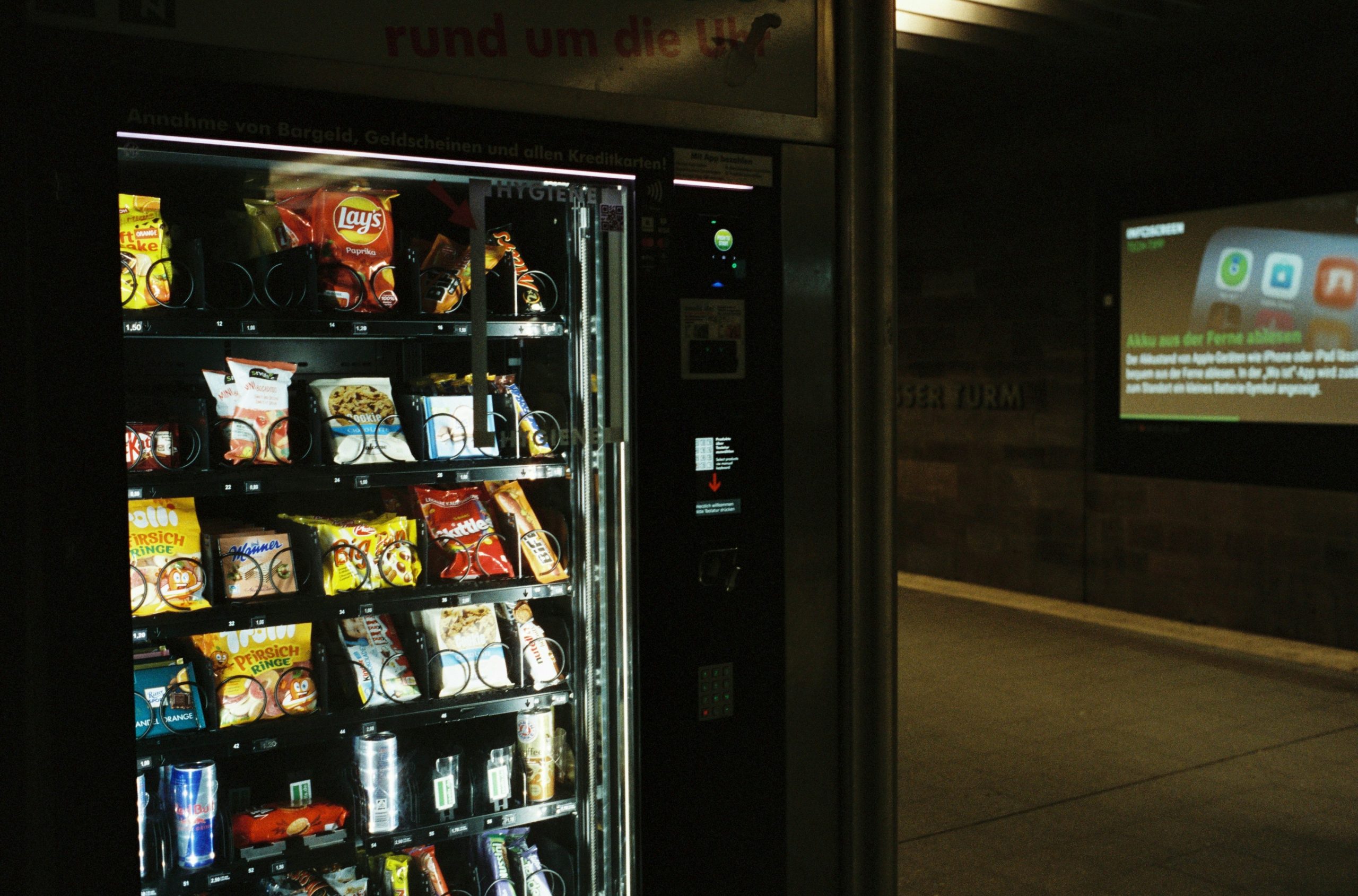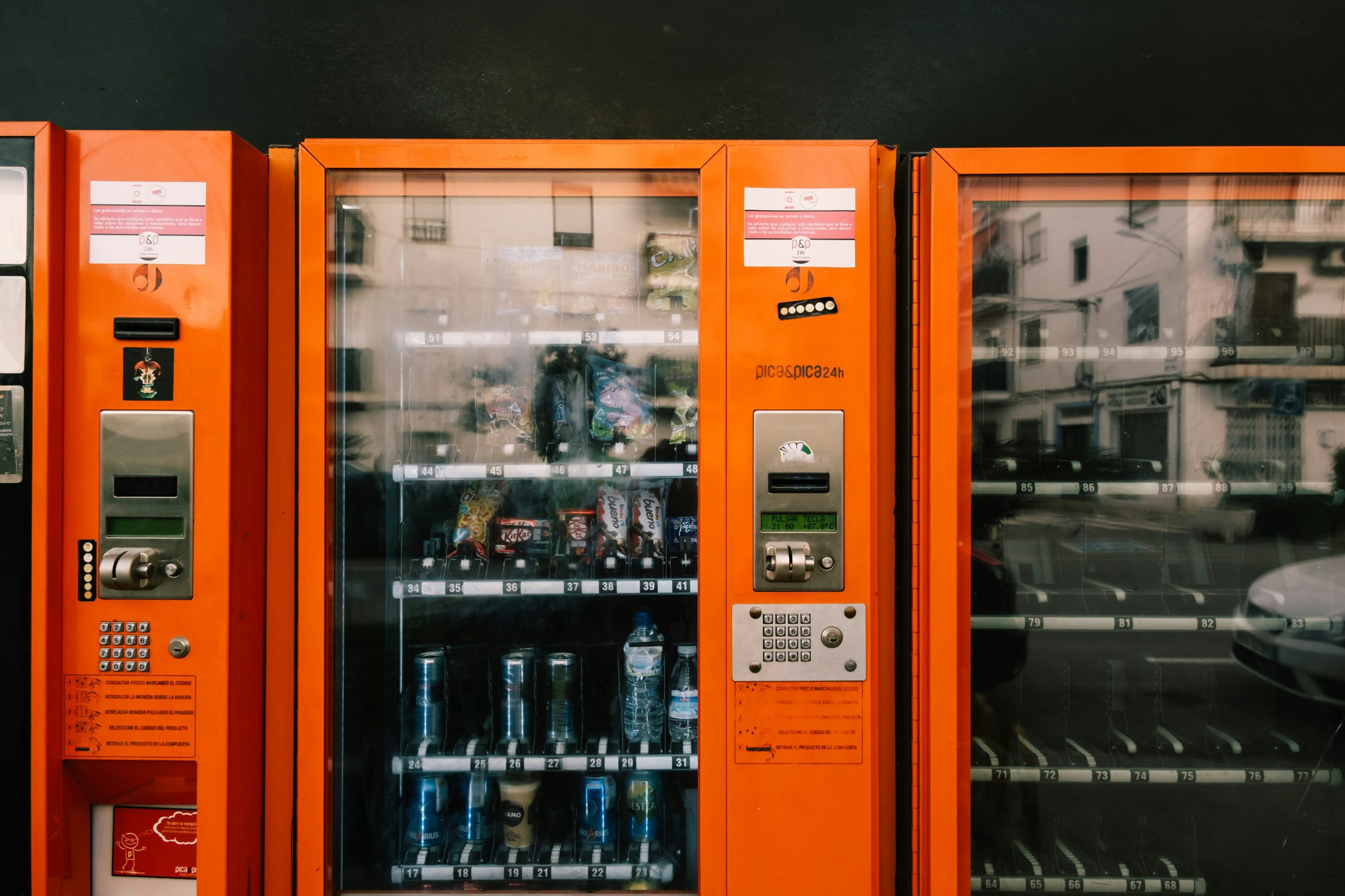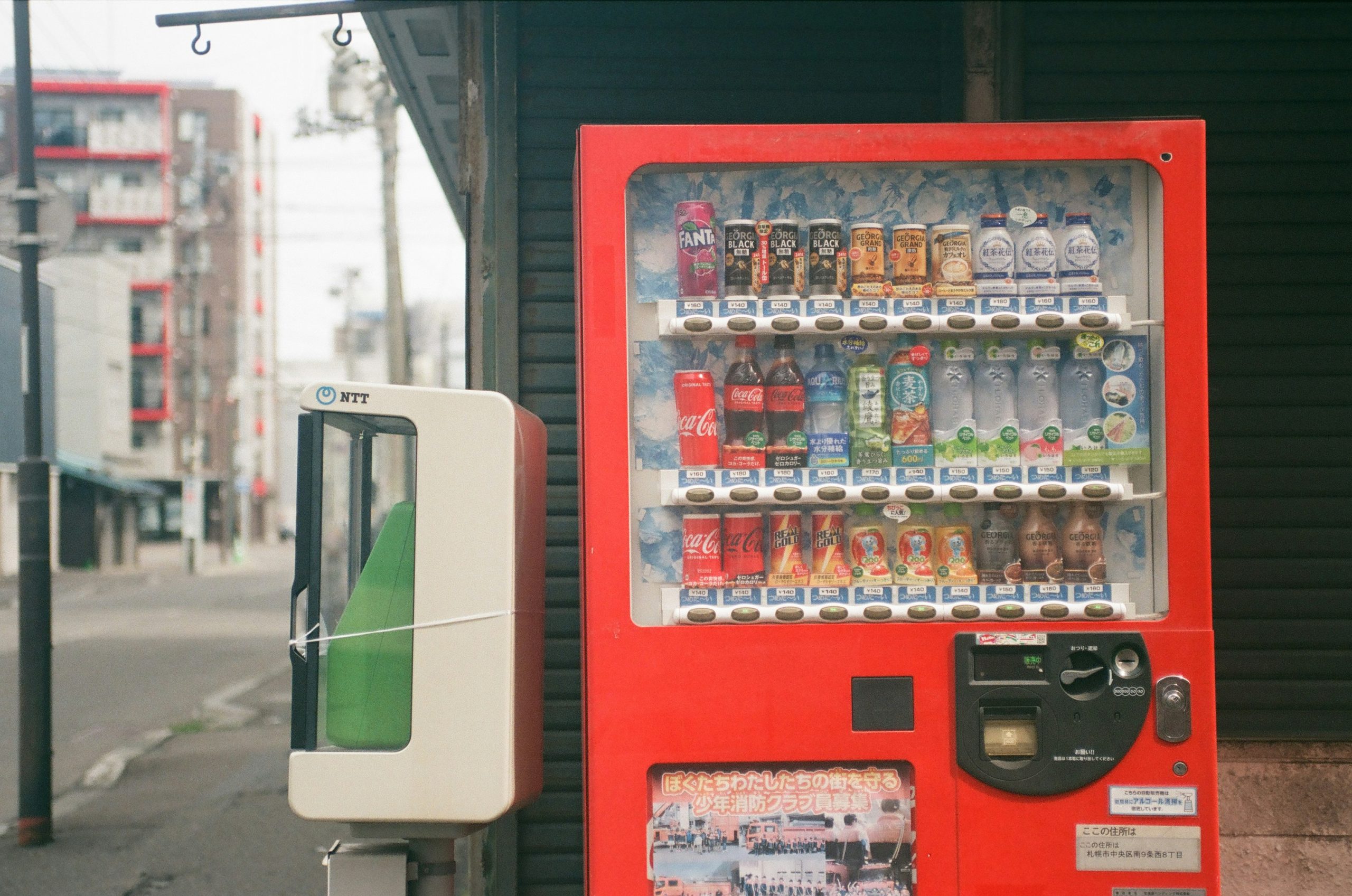
Vending machines have come a long way from dispensing basic snacks and drinks. Today, they come equipped with cutting-edge technology and dispense everything from gourmet meals to medical supplies. But have you ever wondered what happens behind the scenes? How does a vending machine go from sitting quietly in a corner to delivering your desired item at the press of a button?
This article will break down how a modern vending machine works, exploring its mechanisms, technology, and innovative features. Whether you’re a curious customer or an aspiring vending machine entrepreneur, this guide will demystify these fascinating machines.
The Basics of a Vending Machine
At its core, a vending machine operates using a simple process:
- Input – You select an item and pay for it using cash, a card, or other cashless payment methods like e-wallets.
- Processing – The machine registers the selection and payment.
- Output – The machine delivers the chosen item.
While this sounds straightforward, the internal workings are fueled by a complex combination of mechanical components and advanced technology, such as sensors, motors, and software.
Behind the Scenes of a Modern Vending Machine
1. Item Selection
When you press a button or tap on a touchscreen to select your product, a signal is sent to the machine’s control panel. This microcontroller acts as the “brain” of the vending machine, registering your selection. Modern vending machines often use interactive touchscreens, allowing for a user-friendly and detailed experience, such as displaying nutritional information or recommendations.
2. Payment Processing
Once you’ve made your selection, the machine prompts you for payment. Here’s how payments are processed:
- Coin Mechanism – Coins are weighed and scanned for size and composition to validate authenticity.
- Bill Validator – Scans dollar bills to check for specific markings, thickness, and dimensions.
- Card or Cashless Payments – Credit cards, debit cards, and e-wallets like Apple Pay and Google Pay are processed via a built-in card reader or NFC (near-field communication) technology. Real-time processing ensures a seamless transaction, as is evident in Singapore’s vending machines that integrate GrabPay and PayLah!.
Most modern vending machines are cashless, reducing maintenance and ensuring faster transactions.
3. Dispensing Mechanism
Once payment is confirmed, the vending machine springs into action to deliver your product. Depending on the machine design, it may use:
- Spiraling Delivery – Rotating coils push the selected item forward until it drops into the collection tray. Common in snack machines.
- Elevated Pickup Systems – A small motorized elevator carefully picks up and delivers the product without dropping it, often used for delicate goods like bottled drinks or electronics.
- Temperature-Controlled Lockers – Innovations, such as Singapore’s smart lockers, hold products like frozen goods or fresh produce in temperature-appropriate compartments for convenient, safe pick-up.
4. Retrieval
Once the product reaches the dispensing tray, sensors often ensure that it has been successfully delivered. If not, the control panel may trigger a refund or an error message. Sensors are also vital to prevent items from getting stuck, minimizing frustration for customers.
The Role of Smart Technology in Vending Machines
Modern vending machines are far more advanced than their predecessors. Here’s how they leverage smart tech features to enhance the user experience:
1. Real-Time Monitoring
Equipped with IoT (Internet of Things) technology and sensors, modern vending machines monitor inventory levels, temperature, and machine performance in real-time. This ensures they are always stocked and operational, minimizing downtime.
For example, in Singapore, vending machines use smart monitoring technology to ensure products like live seafood or gourmet meals are delivered fresh every time.
2. Customization
Interactive touchscreens provide product recommendations, allow for multi-language options, and enable customers to customize their orders (e.g., adjusting sugar levels in a coffee vending machine). This personalization enhances the customer experience, as seen in location-specific Singapore vending machines tailored for airports or residential areas.
3. Cashless and Contactless Transactions
With the rise of cashless payments, vending machines now accommodate debit/credit cards and e-wallets for quicker transactions. This feature not only caters to the digital-savvy generation but also aligns with efforts to reduce cash dependence.
Singapore is a leader in this aspect, with vending machines fully integrated into its smart city infrastructure.
4. Sustainability Features
Sustainability is more than a buzzword in the vending machine industry. Reverse vending machines (RVMs), for instance, encourage users to recycle cans and bottles, rewarding them with points or discounts. This innovation has seen widespread adoption in countries like Singapore, promoting greener habits and reducing waste.
Innovative Applications of Vending Machines
Vending machines today are expanding beyond snacks and beverages. Here are some creative examples:
- Medical Supplies – Dispensing over-the-counter medicines, band-aids, or thermometers for emergencies.
- Fresh Produce – Offering fruits, vegetables, and eggs for consumers on the go.
- Specialty Goods – Dispensing curated, location-specific products like travel pillows or gourmet coffee beans.
- Pop-Up Events – Limited-edition items in pop-up vending machines create excitement and exclusivity among users.
These innovations aren’t limited to just convenience but also showcase cultural trends and technological advancements.
Vending Machines in Singapore as a Case Study
Singapore’s vending machine ecosystem serves as a prime example of how this industry is evolving. With features like live seafood vending, gourmet hot meals, and sustainability-driven RVMs, Singapore demonstrates how vending machines can meet diverse consumer needs.
Whether you’re grabbing a Hainanese chicken rice meal or recycling a used beverage can, the vending machines in Singapore illustrate the integration of technology and creativity to redefine convenience shopping.
Exploring the Future of Vending Machines
The vending machine industry continues to innovate, paving the way for AI-driven personalization, stronger sustainability initiatives, and even drone-based delivery systems.
If you’ve been inspired by what’s possible with vending technology, why not explore starting your own vending machine business? With increasing demand for convenience and smart solutions, vending machines represent an untapped market full of potential.
Final Thoughts
Vending machines are more than just automated retail points. They’re a testament to innovation, offering convenience, sustainability, and advanced technology. From cashless payments to dispensing gourmet meals, these machines continue to evolve, catering to the needs of modern consumers.
Curious about taking the first step toward starting your vending machine business? Check out our Complete Guide to Setting Up a Vending Business for tips to turn this technology into a successful enterprise.
With the vending industry growing rapidly, it’s essential to stay ahead of emerging trends to remain competitive. One major trend is the integration of eco-friendly practices, such as machines that utilize energy-efficient technology or offer products with sustainable packaging. Another is the rise of smart vending machines, equipped with AI and IoT capabilities to track inventory, analyze consumer preferences, and provide personalized recommendations. By leveraging these advancements, entrepreneurs can appeal to environmentally-conscious and tech-savvy customers alike, ensuring their business remains relevant in a dynamic market.
Furthermore, the incorporation of cashless payment systems in vending machines has revolutionized the customer experience. With the convenience of credit cards, mobile payments, and digital wallets, consumers can make purchases more quickly and efficiently, eliminating the need for exact change. This feature not only enhances accessibility but also broadens the potential customer base by catering to modern shopping habits. Additionally, the integration of remote monitoring allows business owners to manage and maintain their machines more effectively by providing real-time updates on inventory levels, technical issues, and performance metrics. These advancements collectively pave the way for a future where vending machines are not only more convenient but also more responsive to both consumer demands and operational needs.
Furthermore, sustainable practices are becoming increasingly important in the evolution of vending machines. Many modern machines are now designed with energy-efficient components, such as LED lighting and low-power cooling systems, to reduce their environmental impact. Additionally, the use of recyclable materials and the promotion of eco-friendly products within vending machines align with growing consumer preferences for sustainability. These efforts not only help reduce waste but also contribute to a greener future, ensuring that technological progress goes hand in hand with environmental responsibility.
Related Blog



